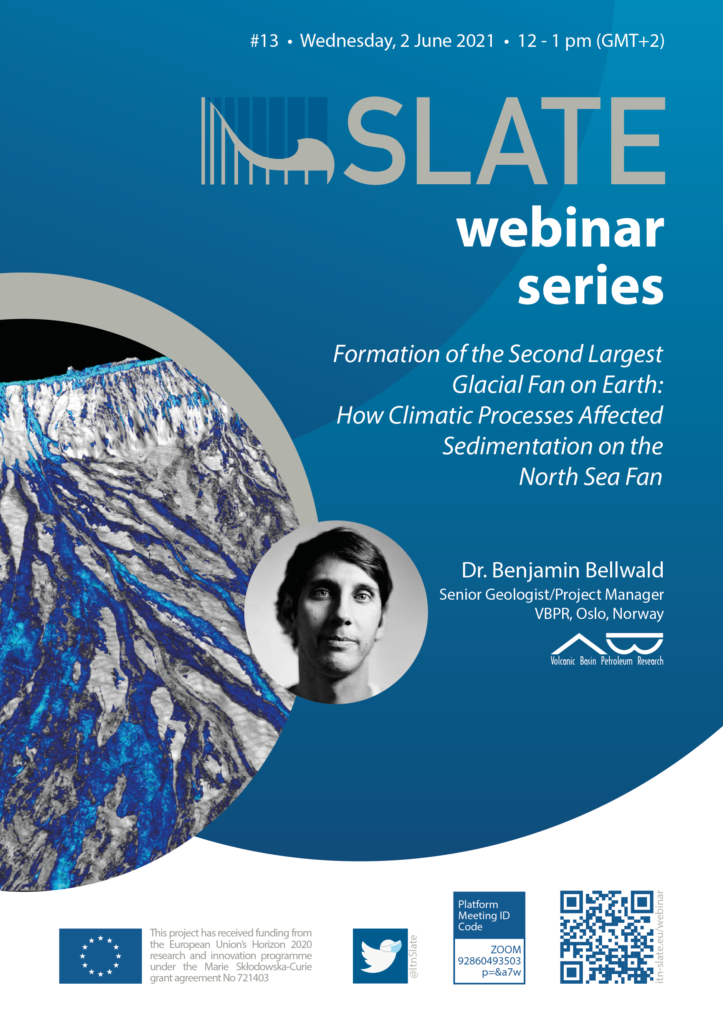
High-latitude trough mouth fans comprise the largest sediment deposits along glaciated margins, and record Pleistocene climate changes on a multi-decadal time scale. The North Sea Fan, located on the northern North Sea margin, represents the second largest trough mouth fan on Earth, accounting for a sediment volume of c. 40,000 km3. Here we present a new formation model for the North Sea Fan derived from detailed horizon and attribute interpretations of high-resolution processed 3D seismic reflection data. We use seismic cubes covering an area of c. 50,000 km2, allowing us to image the shallow subsurface in a vertical resolution of 2 m and a bin size of 10 m.
The interpretation shows that stacked channel-levee systems form up to 400 m thick sedimentary sequences during the last glaciation, accumulating in rates of 100 m/kyr. The channels are elongated and can be traced from the shelf edge towards the deep basin for distances of >150 km, and document long-distance sediment transport in completely disintegrated water-rich turbidite flows. The sediments formed by meltwater turbidites and glacigenic debris flows, mainly deposited during glacial periods in the Late Pleistocene, were remobilized by the Tampen, Møre and Stad megaslides. These megaslides are suggested to have occurred towards the end of glaciations, during glacial-interglacial transitions, or within interglacial time periods.
The deepest stratigraphy of the North Sea Fan is dominated by contourites, deposited during deglacial and interglacial time periods in the Early Pleistocene. Contourites most likely acted as gas-charged weak layers for megaslides, and filled the escarpments shaped by the Late Pleistocene megaslides. Remobilized ooze mounds and sand injectites identified at the base of the North Sea Fan are caused by overpressure release related to rapid glacial sedimentation.
The use of high-quality 3D seismic data allows new conclusions about the formation of trough mouth fans. Improvements in the presented formation model of the North Sea Fan include new insights into fluid migration, megaslide triggering, and grain-size distribution within this glacial depocenter. Our data highlight that exceptionally large volumes of meltwater may discharge to the slopes of trough mouth fans and trigger erosive turbidite flows. We conclude that freshwater supply and overpressure build-up are likely underestimated factors for sedimentary processes during glacial cycles.
- Wednesday, 2 June 2021
- 12 pm – 1 pm (GMT+2)
- via ZOOM
- permanent Zoom Link
- ID: 928 6049 3503 Code: p=&a7w
Webinar Flyer:


